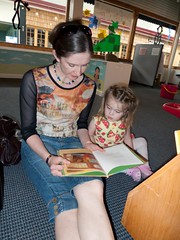Census data are revealing growing income levels and declining rates of marriage in the black middle class, according to the Washington Post. One sociologist reflects on her own experience with these trends:
Kris Marsh’s household doesn’t have two incomes. But in Prince George’s County, she is increasingly becoming the face of the black middle class.
Marsh, a sociologist at the University of Maryland, moved to Bowie last year from Los Angeles, determined to live in a place she had always heard was the promised land for educated, successful African Americans. She bought a large, single-family house in a development where many of her neighbors are also single women.
“I found a community I’m in love with,” said Marsh, who has done research on the role that single women are playing in fueling the expansion of the black middle class. “Just because I didn’t have a partner or a husband, it wasn’t going to prevent me from living in the area.”
Marsh’s experience in Maryland typifies broader national trends:
New census statistics from data collected in 2007 and 2008 show that an increasing number of African Americans across the country are becoming more like those in Prince George’s, as well as closer to the national demographic norm. Many blacks made strides during the past decade, with education levels and incomes rising faster than those of the U.S. population as a whole.
In 2008, 20 percent of African Americans had a bachelor’s or advanced degree, a 19 percent jump from 2000. The percentage of black households making more than $75,000 has gone up 42 percent since 1999, from about 13 percent to 18 percent.
But what of the Great Recession? Demographers weigh in:
The statistics do not reflect the effects of the recession, which has caused high unemployment among black men in particular, but demographers say it is unlikely to alter the long-term trend.
A political scientist, along with Marsh, offer some possible explanations for these changes:
Michael Dawson, a professor of political science at the University of Chicago, said black women are more likely to be single because of the high number of jailed African American men and because black women tend to obtain higher levels of education than black men, narrowing their options for a mate who is available and similarly educated.
Marsh said her research has shown that African American women are marrying later in life, if at all, and postponing having children.
Of course, disparities still exist between whites and blacks in the United States:
Despite the significant gains made by African Americans, there are still large and persistent disparities between blacks and whites in income, education and poverty rates, the national census numbers show. Whites are twice as likely as blacks to be in the upper-income brackets, and African Americans are three times more likely to be living in poverty.







